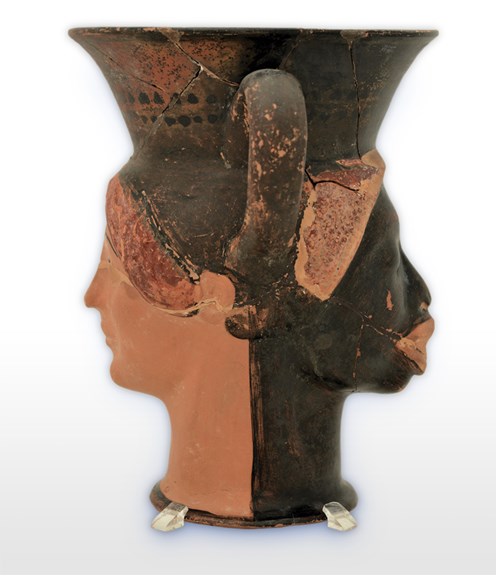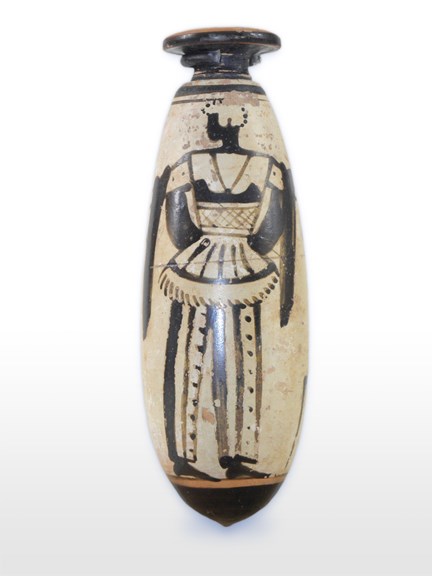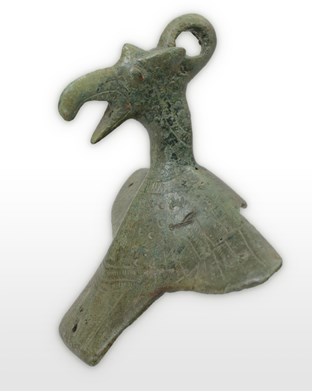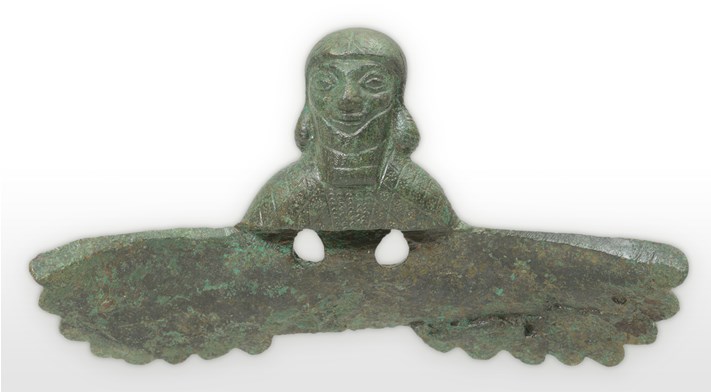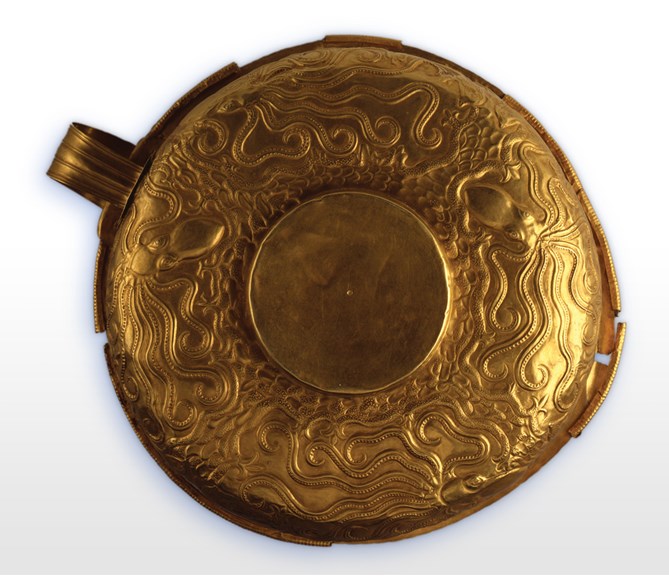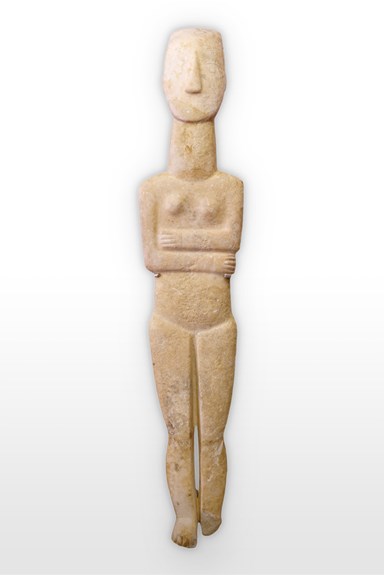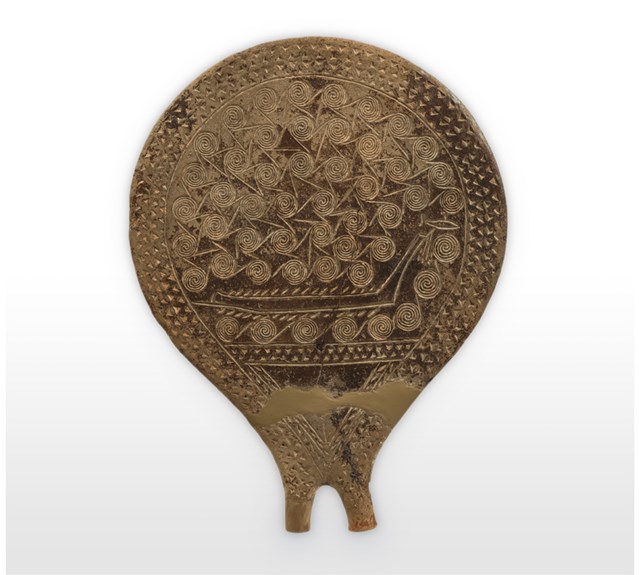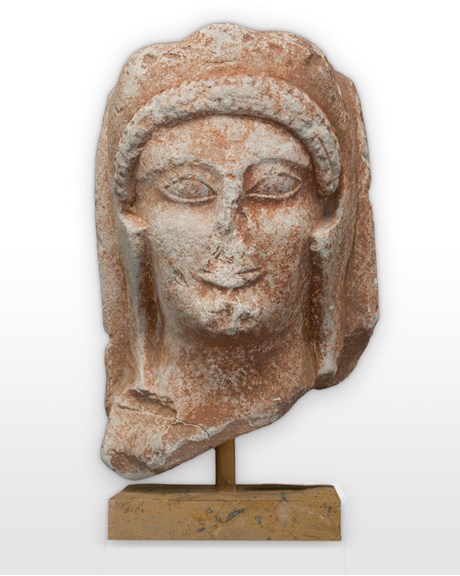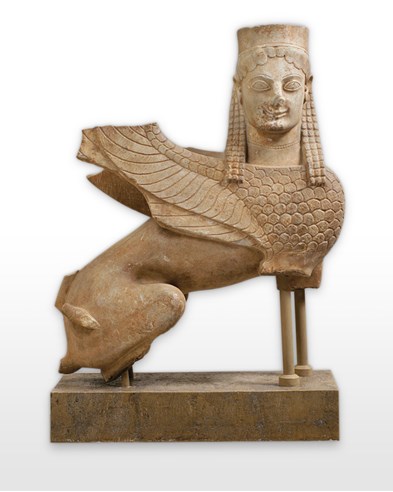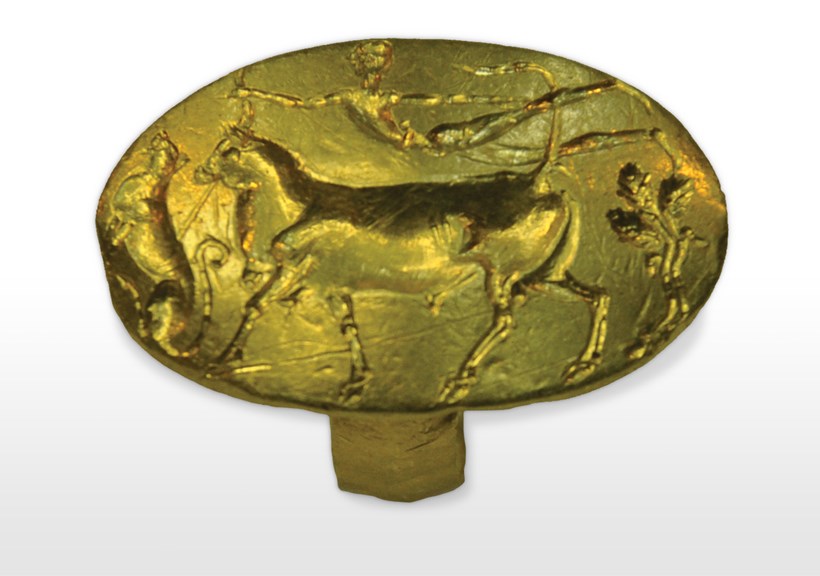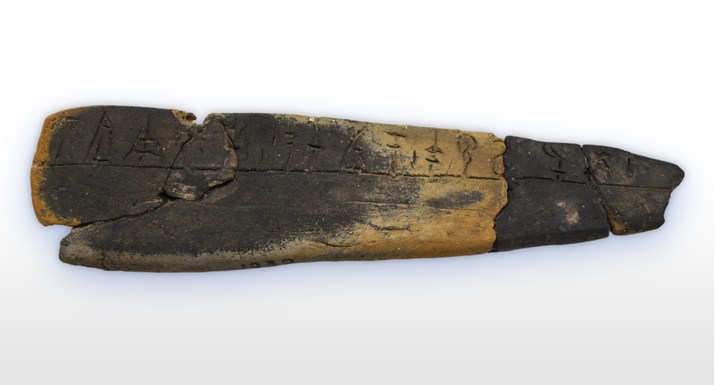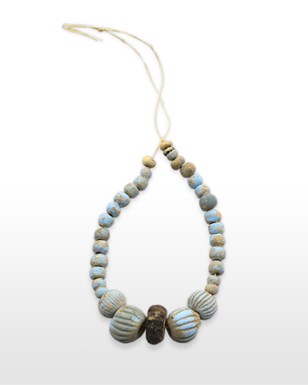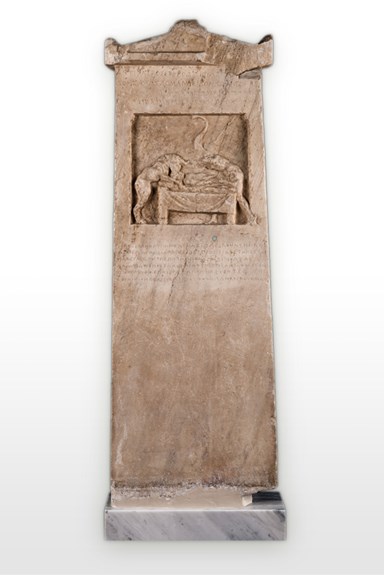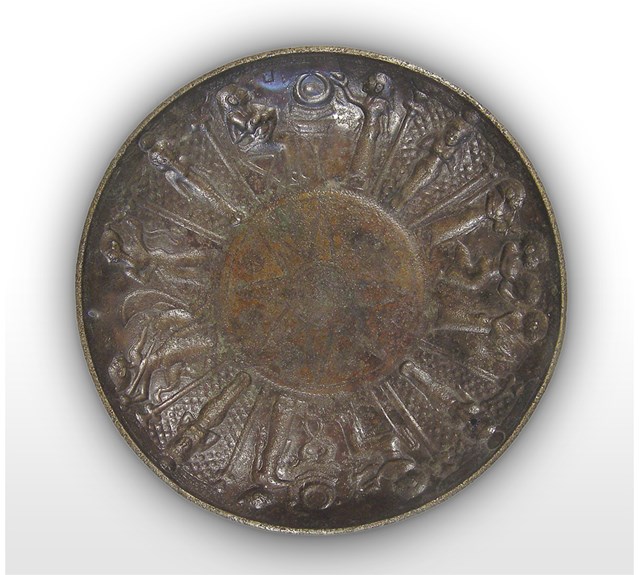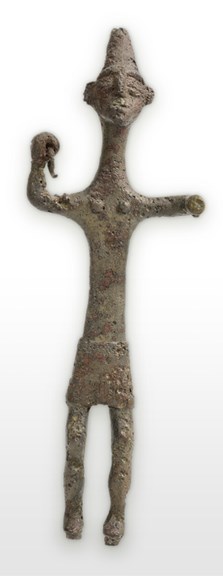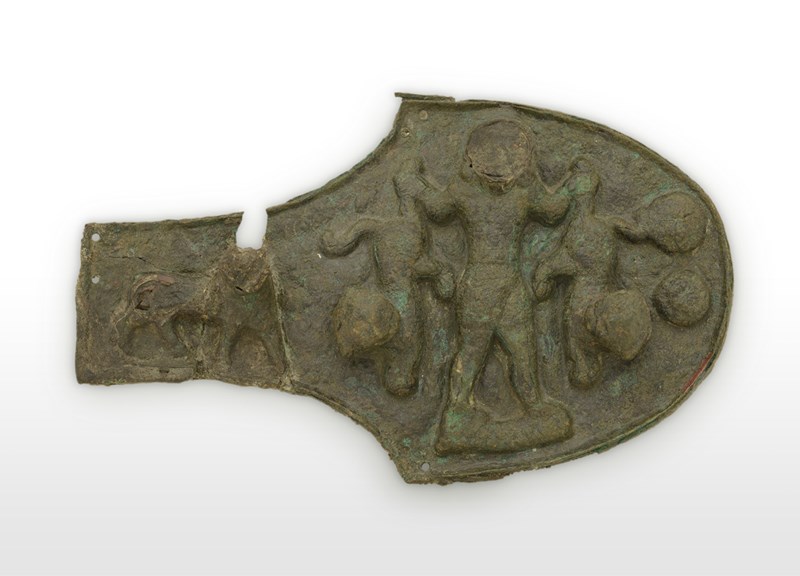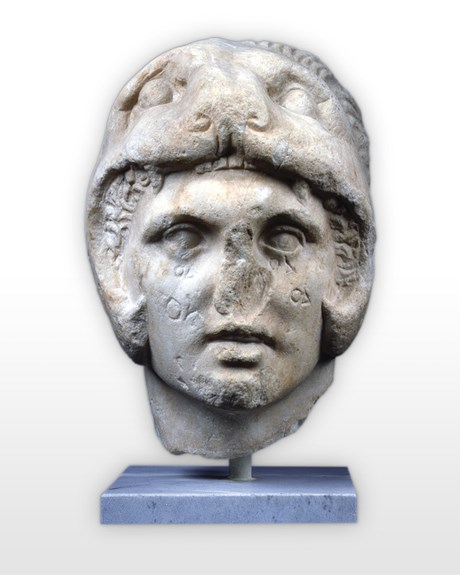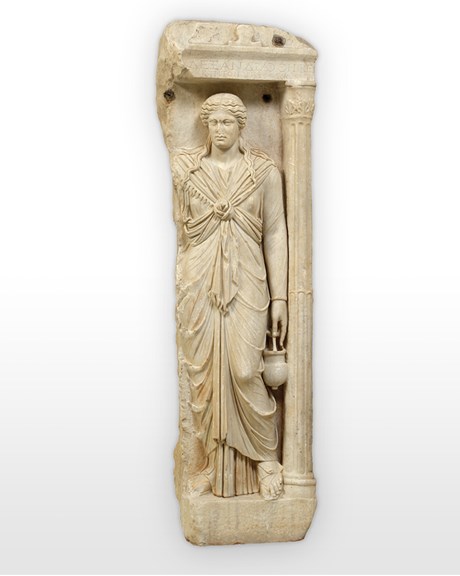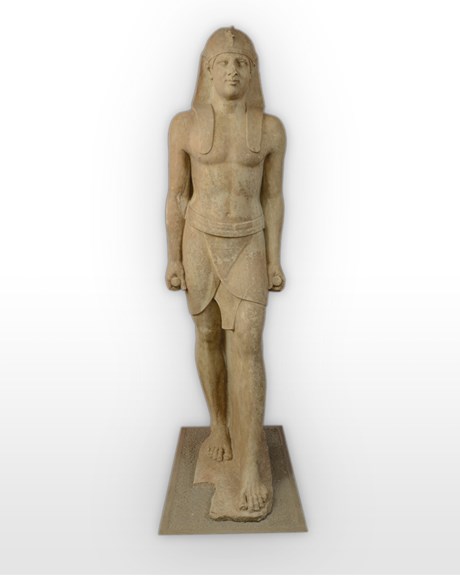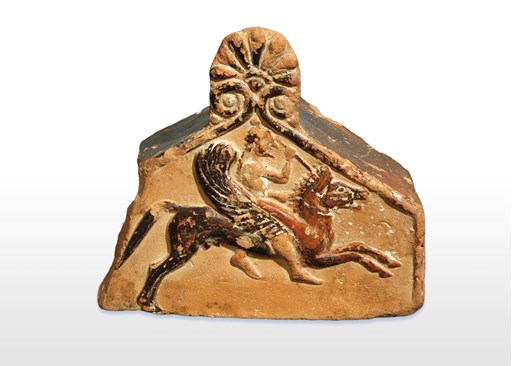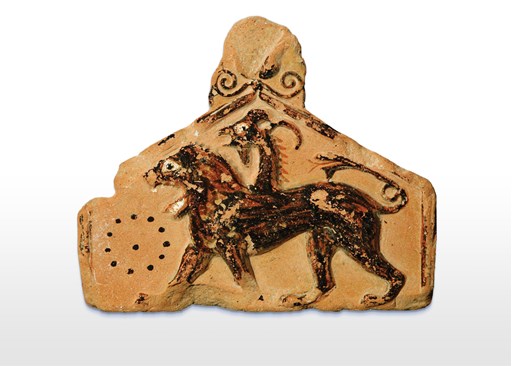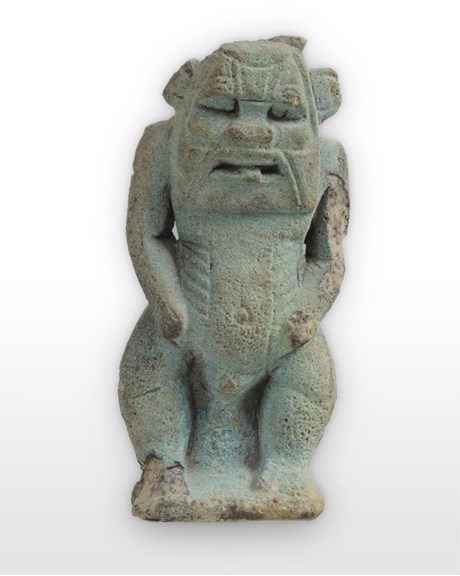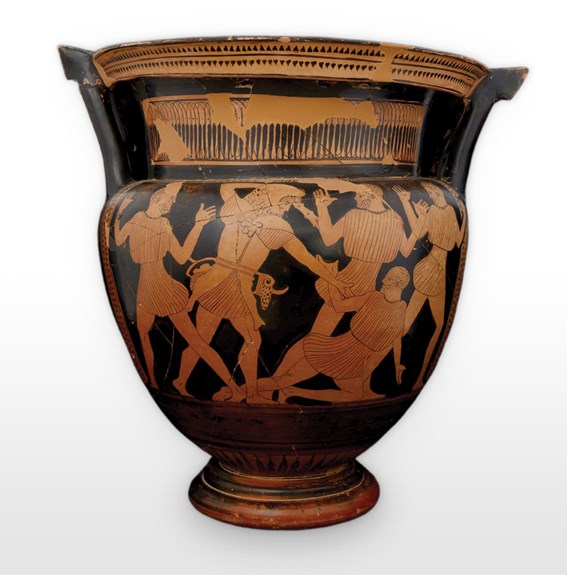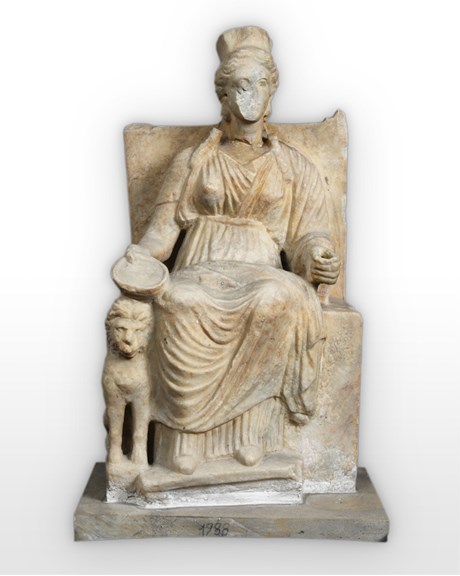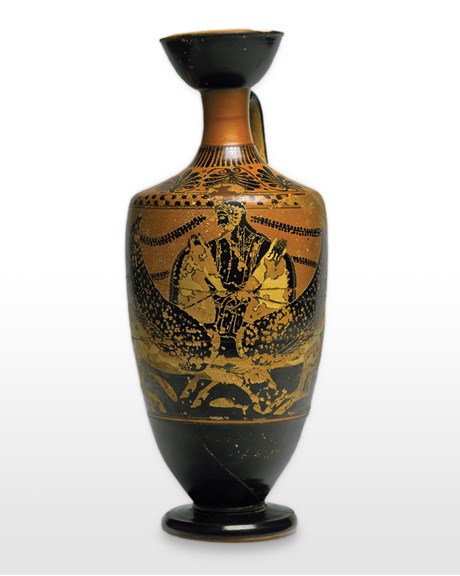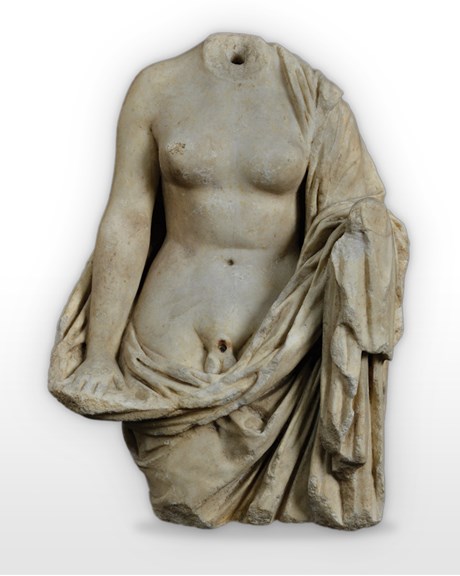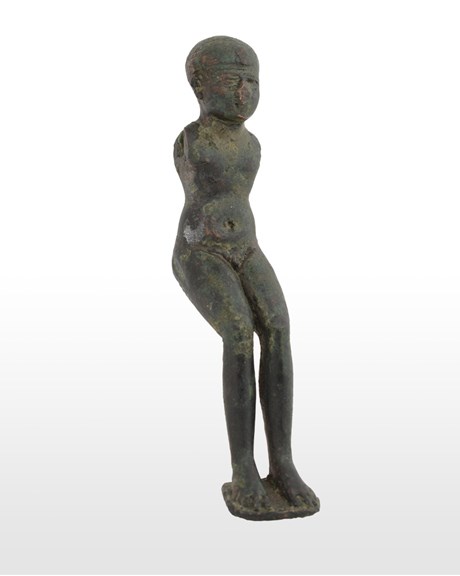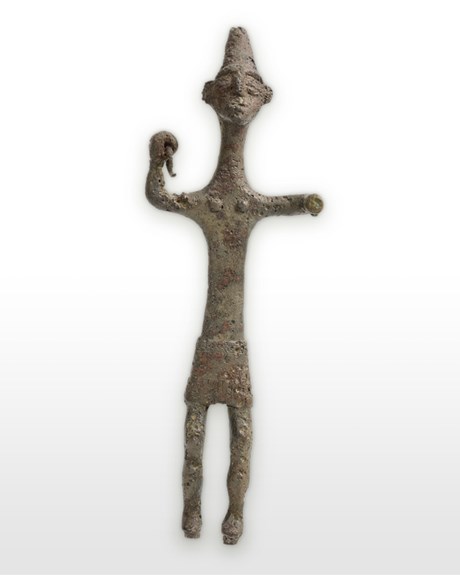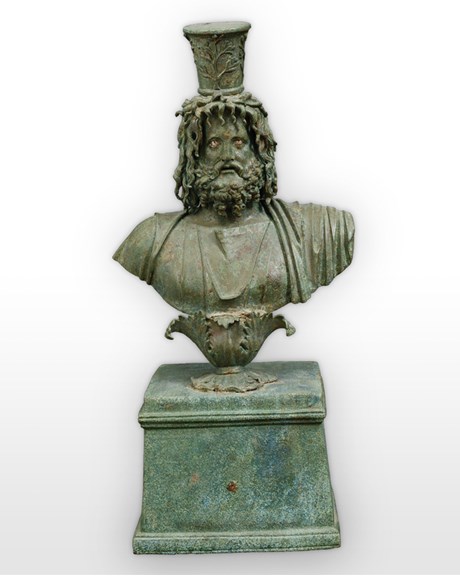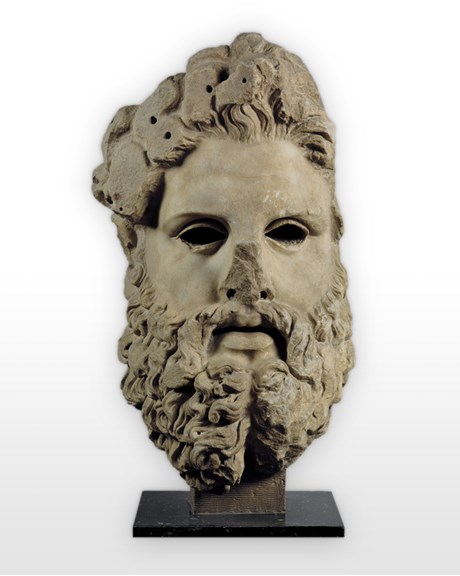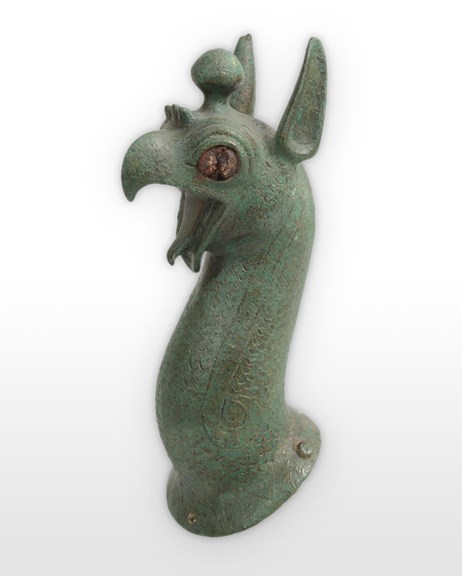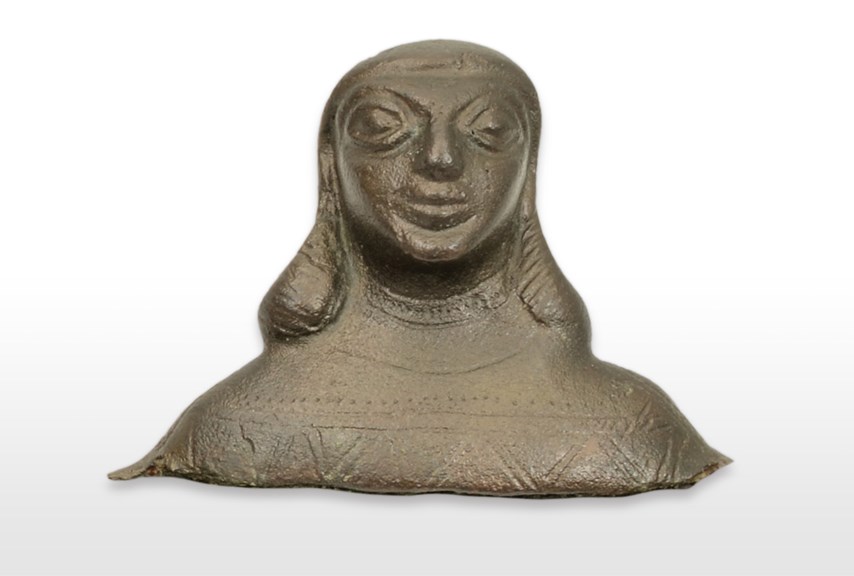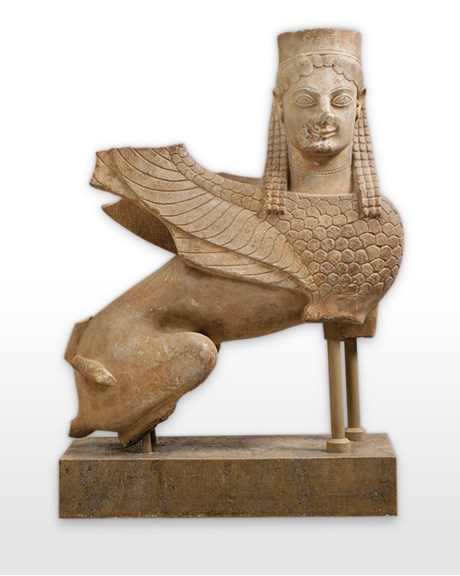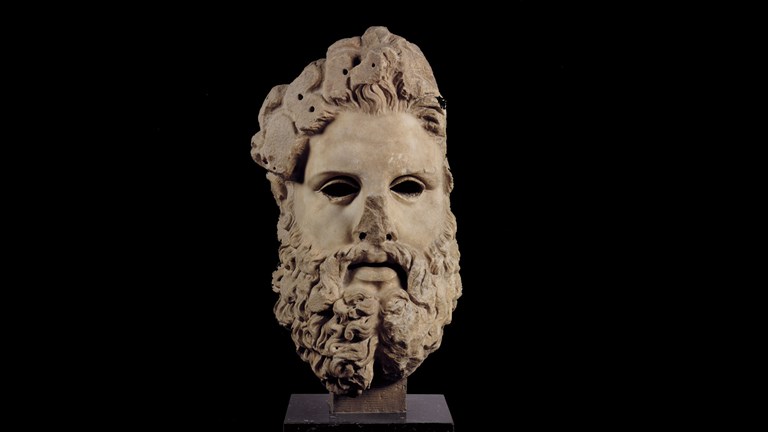
Who’s who in ancient Greece
Open Horizons: Ancient Greek Journeys and Connections introduces many people, gods and mythological figures which may be unfamiliar.
Alexander the Great
Ruler and military commander, and admirer of Herakles. Lived 356–323 BCE.
Related exhibition object
Alexandra
Initiate in the cult of Egyptian goddess Isis.
Related exhibition object
Antinous
Favourite of Roman emperor Hadrian, he drowned in the river Nile in 130 CE and was deified. The cult of Antinous-Osiris spread throughout the provinces.
Related exhibition object
Apollo
Derived from Egyptian Harpocrates, Apollo was god of many things, including music, poetry, healing, disease, prophecy and light.
Related exhibition object
Bellerophon
Corinthian hero, son of Glaucus or Poseidon and Eurynome (wife of Glaucus). Mounted on his winged horse Pegasus, Bellerophon slew the Chimaera, a fire-breathing monster.
Related exhibition objects
Bes
God protector of mothers and new-born babies, and provided luck in fertility and relationships.
Related exhibition object
Bousiris
Mythological king of Egypt, son of Poseidon and Lysianassa. He was killed by Herakles to stop the custom of sacrificing strangers who came to his country in order to end a long drought.
Related exhibition object
Cybele
Mountain goddess associated with the Near Eastern goddess Kubaba. Characteristic of her worship were ecstatic rituals in wild locations. The cult of Cybele spread from Phrygia.
Related exhibition object
Herakles
Born a mortal, he was seen as a son of Zeus, became a hero and was deified after his death. He tamed nature with his divine power. His cult was widely distributed throughout the Mediterranean region including the Roman Empire.
Helios
Sun god who rode a chariot through the sky.
Related exhibition object
Hermaphroditus
Handsome son of the gods Hermes and Aphrodite. When swimming in the waters of a spring near Halikarnassus, in Asia Minor, nymph of the spring Salmakis embraced him in mad desire and asked the gods to grant her prayer that they live ever after united in one body.
Related exhibition object
Horus/Harpocrates
Egyptian child-god, the son of Isis and Osiris, who represented the newborn sun rising each day.
Related exhibition object
Melqart
Phoenician / Levantine god, identified with Herakles.
Related exhibition object
Memnon
Leader of the Ethiopian contingent at Troy.
Related exhibition object
Reshef
A god of war, disease and the underworld, both dangerous and benevolent.
Related exhibition object
Serapis
Patron god of Egypt during the Ptolemaic Dynasty, combining aspects of the Egyptian gods Apis and Osiris, and the Greek gods Zeus, Hades and Asklepios. Ptolemy I Soter (305-4–282 BCE) promoted the cult of Serapis as a means of unifying the Greeks and Egyptians.
Related exhibition object
Theseus
Athenian mythical hero-king who sailed to Crete and killed the half-human, half-bull Minotaur. His journey reflects Athens’ first attempt to gain power in the Aegean Sea.
Related exhibition object
Zeus
King of the ancient Greek gods and father of Herakles.
Related exhibition object
Chimaera
Fire-breathing monster with the head and body of a lion, a goat-head growing on its back and the tail of a snake.
Related exhibition object
Griffins
Daemonic creatures with eagle heads and lion bodies.
Related exhibition objects
Maenads
Female followers of Dionysos, representing wine and madness.
Related exhibition object
Minotaur
Half-human, half-bull, killed by mythical hero-king Theseus.
Related exhibition object
Pegasus
Winged horse, on which Corinthian hero Bellerophon was mounted when he slew the dreadful Chimaera, a fire-breathing monster.
Related exhibition object
Satyrs
Wild, rustic fertility spirits.
Related exhibition object
Sirens
Supernatural creatures with a female head and body and claws of a bird of prey. Ιn Greek mythology the Sirens trapped mariners with their enchanting song and lured them to their deaths.
Related exhibition object
Sphinx
Hybrid creature with the head of a woman, body of a lion and wings of a bird. The Sphinx has Egyptian roots, is associated with riddles and puzzles, and symbolises the inexplicable. It has also been considered the bearer of bad luck and destruction.
Related exhibition object
Eukleides
Athenian sculptor who lived in the 2nd century BCE.
Related exhibition object
Herodes Atticus
Wealthy Athenian orator, sophist and benefactor, who had an estate in Marathon (CE101–177). A statue depicting the deity Antinous-Osiris was unearthed on the site of his estate in 1843, at the sanctuary of the Egyptian Gods.
Related exhibition object


